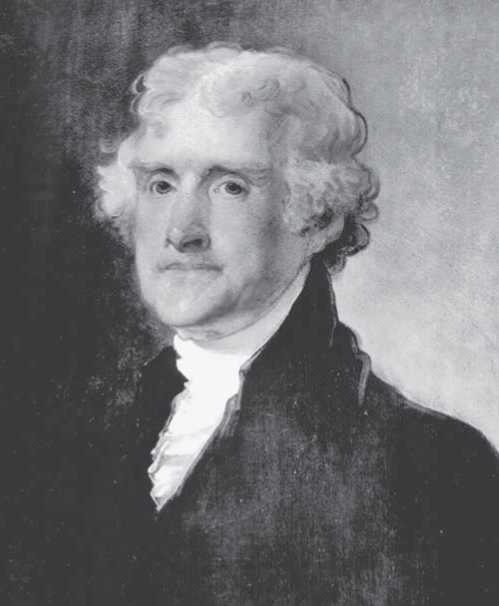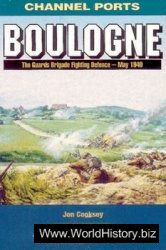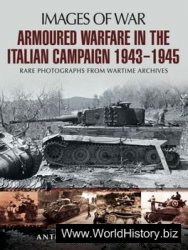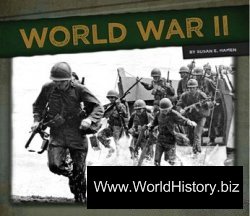The author of the Declaration of Independence (July 4, 1776) was born near present-day Charlottesville, Virginia, at Shadwell on April 13, 1743 (old style, April 2, 1743; Britain did not adopt the Gregorian calendar until 1752). Jane Randolph, Jefferson’s mother, was a member of the prominent Randolph family of Virginia. His father, Peter Jefferson, was a self-taught surveyor. Peter Jefferson died on August 17, 1757, bequeathing his land and slaves to his son Thomas Jefferson. However, Jefferson declared his father’s most valuable legacy was his provision for his children’s education.
After his father’s death, Jefferson first studied under the tutelage of a Virginia clergyman, the Reverend James Maury. He moved in 1760 to Williamsburg, the capital of colonial Virginia, to attend the College of William and Mary. After completing his studies in 1762, he read law under George Wythe, a prominent jurist and classical scholar, and entered the bar in 1767. Two years later, he began his political career as a member of Virginia’s House of Burgesses. On the personal side, Jefferson married Martha Wayles Skelton on January 1, 1772. The couple had their first child, a daughter Martha, in the autumn of 1772.
Although not yet a conspicuous politician, Jefferson began to put his thoughts on paper and gained a reputation as a talented writer. In 1774 he authored “A Summary View of the Rights of British America,” an essay protesting British imperial policy. Considered too radical for approval by the assembly, the “Summary View” nevertheless earned Jefferson notoriety after it was published and circulated throughout the colonies. A year later, when Jefferson arrived in Philadelphia as one of Virginia’s delegates to the Second Continental Congress, John Adams noted that Jefferson enjoyed “a reputation for literature, science, and a happy talent for composition.” Jefferson served on a number of important committees, including the one charged with the preparation of a declaration of independence. Jefferson drafted the document, which the committee altered slightly and then presented to Congress. There, the document was further edited; one change was the removal of Jefferson’s assertion holding the king responsible for the existence of slavery on the North American continent. On July 4, 1776, Congress approved the Declaration of Independence.
Jefferson spent most of the Revolutionary War (1775-83) in his home state of Virginia. Three months after Congress declared independence, Jefferson returned to work and to his family in Virginia. In Williamsburg, he contributed to the drafting of his state’s new constitution; among other things he advocated complete separation of church and state. Jefferson believed that if the state no longer supported the church, then most Virginians would reasonably adopt deism. His “Statute for Religious Freedom” was bitterly disputed and would not become law until the support of evangelicals pushed it through a decade later. In 1779 Jefferson was elected governor of Virginia (1779-81). In 1781 the British invaded Virginia. Despite Jefferson’s attempts to reinforce defenses, British troops commanded by Benedict Arnold easily took Richmond. By the spring of the following year, Charles, Lord Cornwallis arrived with his army from North Carolina, and general wartime destruction under British occupation heightened. The capital was moved from Richmond to Charlottesville. British mounted infantry led by Colonel Banastre Tar-LETon attacked the village, but they failed to capture Jefferson and members of the assembly. The incident led the assembly to make a formal inquiry into possible misconduct by Jefferson. Although cleared of any wrongdoing, Jefferson was deeply wounded by the episode and pledged that he would never again enter public life.
Jefferson and his family remained at his Poplar Forest plantation until August 1781. While there, Jefferson wrote much of the Notes on the State of Virginia—one of the most important American scientific works of the 18th century—in answer to questions from his friend the Marquis de Barbe-Marbois. Besides covering science, education, and religion, Jefferson, who was the second-largest slave owner in Albemarle County, expressed controversial and contradictory ideas about slavery. Jefferson advocated freeing slaves at some point in the future, but he considered African Americans inferior. He also asserted that slaves could not be freed and then incorporated into European-American society due to “deep rooted prejudices entertained by the whites.” He also believed “ten thousand recollections, by the blacks, of the injuries they have sustained. . .” would make free African Americans dangerous to European Americans and therefore argued for colonization—sending freed slaves to a country of their own in Africa or elsewhere. However, Jefferson never followed up on these ideas; he freed only a handful of favored slaves, retained possession of the rest, and never sent any slave back to Africa.
Within the household of the Monticello plantation, Jefferson’s family had grown. Martha had given birth to two more daughters, but only one of them survived more than a year. Tragically, Martha never recovered after the birth of their daughter Lucy in May 1782, and she died two months later on September 6, 1782. Jefferson never remarried.
Although he had been named as one of the negotiators for the treaty of peace to be with Great Britain, he was unable to travel to France in 1782. Instead, he entered Congress in the fall of 1783. As a member of Congress, Jefferson proposed a plan of government for the Western Territory. The Ordinance of 1784 was “significant historically,” as Jefferson scholar Dumas Malone writes, “because it embodied the principle that new states would be formed from the western region and admitted to the Union on an equal basis with the original commonwealths.” Never put into effect, the Ordinance of 1784 served as the basis for the Northwest Ordinance of 1787 (see also Northwest Ordinances). That same year Jefferson wrote his “Notes on Coinage,” proposing a system of money for the United States.
In May 1784 Congress elected Jefferson minister plenipotentiary to France. Within a week he had his instructions from Congress and soon thereafter sailed to Europe with his eldest daughter, Martha. While in Paris, he became close friends with John and Abigail Adams. Jefferson had left his daughters Mary and Lucy with his sister-in-law in Virginia, but after the death of his youngest daughter Lucy, Mary (Polly), with Sally Hemings, a slave, sailed to join her father in Paris. In the spring of 1785, when Benjamin Franklin returned to Philadelphia, Congress appointed Jefferson to the Court of Versailles as his successor. On May 17, Jefferson presented his credentials to Louis XVI and became the United States minister to France. He remained in France until the fall of 1789, witnessing the birth of the French Revolution (1789-99).
Before Jefferson’s return to the United States, George Washington appointed him as secretary of state. Once in the cabinet, Jefferson advocated policies in opposition to the ideas of Alexander Hamilton, the secretary of treasury. Washington seemed to favor his close personal friend, Hamilton, and allowed the treasury secretary to define the major policy initiatives of the administration. Jefferson became frustrated with this situation and began to coordinate the opposition to Hamilton’s policies and thus contributed to the development of the Democratic-Republican Party. Jefferson advocated a smaller invisible government and supported the French Revolution; Hamilton wanted to enlarge government and was pro-British. Jefferson believed that the republic was most secure if it retained its agrarian character, and he viewed independent yeoman farmers as the repositories of virtue and God’s chosen people. Hamilton hoped to create an integrated economy with both industry and agriculture, and he sought the support of the rich with the idea that all men should be dependent upon their superiors and that those superiors should be dependent on the national government. By January 1792, Jefferson had decided to retire from Washington’s cabinet, but his friend James Madison persuaded him to

Thomas Jefferson. Painting by Thomas Sully (NationalArchives)
Remain in his post. Jefferson continued as secretary of state until the close of 1793.
From 1794 to 1796 Jefferson claimed to turn his attention to his personal affairs and the building of his home in Monticello. Financially, Jefferson struggled with debts, some of which he inherited from his father-in-law and some of which he incurred on his own because of his life style and construction costs. Jefferson described his plantation home at Monticello as his “essay in architecture.” Chiefly influenced by the works of Andrea Palladio (150880), an Italian architect, Jefferson’s home was designed in the neoclassical style. (Jefferson also designed the Capitol in Richmond, the University of Virginia in Charlottesville, and his plantation house at Poplar Forest in the Palladian manner.) Originally planned as a two-story, eight-room dwelling, the first house at Monticello was never completed. Enslaved and hired workmen carefully demolished the house in an effort to salvage the bricks, while construction supplies were primarily made on the plantation. Owing to Jefferson’s continued absence from home, construction was often delayed; in fact Jefferson’s 21-room plantation house was completed only in 1809, 40 years after construction began.
Jefferson’s political retirement did not last long as he continued to oppose the emerging Federalist Party
And ran for president against his old friend John Adams. In the contest, Adams received 71 electoral votes to Jefferson’s 68. Following the original provisions of the Constitution—the framers had not anticipated the development of POLITICAL PARTIES and stipulated that the person with the second most electoral votes would become vice president—Jefferson assumed national office as vice president. Whatever his official position, Jefferson opposed many of Adams’s policies, viewing them as tending toward monarchy. After the passage of the Alien and Sedition Acts in 1798, Jefferson drafted the Kentucky Resolutions (November 13, 1798) arguing for nullification of the acts. (See also Virginia and Kentucky Resolutions.) He justified his position by claiming the laws represented an unconstitutional use of power. The Kentucky Resolutions were adopted just prior to the opening salvo of the presidential ELECTION OF l800.
As the election began, Jefferson predicted that “our campaign will be as hot as that of Europe, but happily we deal in ink only; they in blood.” He said the nation’s newspapers were “teeming with every falsehood they can invent for defamation.” Jefferson supporters labeled John Adams a monarchist; Adams supporters called Jefferson an atheist; each side declared their opponents enemies of the Constitution. When the electoral votes were cast on December 3, 1800, Adams was defeated, but Jefferson did not win the presidency. Instead, he tied with Aaron Burr, his Democratic-Republican running mate. This bizarre circumstance was only resolved in Jefferson’s favor on the 36th ballot in a vote in the House of Representatives. On March 4, 1801, Thomas Jefferson was inaugurated the third president of the United States. He attempted to ease party faction in his inaugural address by declaring, “we are all republicans, we are all federalists.” However, party strife did not end since Jefferson reversed the Federalist Party effort to strengthen the central government at the expense of the states.
Even while politically active, Jefferson continued his intellectual pursuits. He served as president of the American Philosophical Society. He was also interested in the scientific world of the West: Jefferson sponsored various North American expeditions, including the “voyage of discovery” lead by Captains Meriwether Lewis and William Clark. On January 18, 1803, Jefferson sent a secret message to Congress explaining the planned expedition to the western territories. Charged, among other things, to find the Northwest Passage to the Pacific Ocean, to establish contact with the various Native American tribes of the territory, and to make detailed scientific observations of animal and plant life, the Lewis and Clark Expedition departed on the journey on July 4, 1803.
During his first administration, Jefferson continued to be the target of vicious attacks by his political enemies. Scandalmonger James T. Callender had been a Democratic-Republican Party journalist who was convicted and penalized under the Sedition Act for his comments about the Adams administration. Callender assumed that since he was a political martyr, he would be rewarded with an appointment once Jefferson was elected. After Jefferson rejected Callender’s request to become postmaster of Richmond, Callender turned on Jefferson and, in 1802, published reports that Jefferson had fathered children by an “African Venus”—Jefferson’s slave, Sally Hemings. These charges were dismissed at the time, and by most scholars until recently. In 1998, however, a DNA study demonstrated that Jefferson fathered at least one of Sally Hemings’s children. Other research showing that Jefferson was at Monticello about nine months before the birth of each of Sally Hemings’s children has led most scholars to accept the claim of the Hemings family that Jefferson had a longtime sexual relationship with Sally Hemings. This conclusion makes many of his comments about race and interracial sexual relations, which he condemned, appear hypocritical.
These allegations did not carry much credence in the early 19th century, and in 1804 Jefferson was overwhelmingly reelected president. He benefited from several developments beyond his control. By the time he took office in 1801 the Quasi-War (1798-1800) had been resolved and a temporary peace in Europe between France and Great Britain would soon begin. But he also took actions that made his first term a success. He altered the direction of the government by reversing the Federalist Party policies. He reduced the size of the army and navy, and he shrank the already small federal bureaucracy. Jefferson advocated a policy that held that the best government was one that limited its interference in the daily lives of the people. He also pursued a simpler style of governing by doing away with many formal state occasions and holding more intimate political dinners. His greatest achievement was the Louisiana Purchase, which effectually doubled the nation’s size, adding 828,000 square miles of land and moving the western boundary to the Rocky Mountains.
The second term did not proceed as smoothly. The navy finally managed to end the war with Tripoli in the summer of 1805. But bigger international problems soon preoccupied Jefferson and handicapped his administration. France and Great Britain went to war again in 1803, and within a few years a stalemate forced both countries to put pressure on the United States to end its neutral trading. Between the British Orders in Council and the Berlin Decree and Milan Decree of Napoleon Bonaparte, there was little room left for United States shipping to trade with either nation. Compounding these difficulties was British impressment of sailors from U. S. ships and the Chesapeake-Legfard affair. On June 22, 1807, the British HMS Leopard fired upon USS Chesapeake when the naval Captain James Barron refused to allow the British to search for deserters After the incident Jefferson faced a choice: war, which many people clamored for, or some form of “peaceable coercion.” Jefferson chose the latter course of action and established a commercial embargo (1807), which destroyed the nation’s commerce and nearly ruined the economy. By the end of his presidency most people recognized the failure of the embargo and the measure was repealed as Jefferson left office.
Jefferson returned to his beloved Monticello in 1809, where he was surrounded by his daughter Martha’s family, the enslaved plantation community, and a constant stream of visitors. In retirement, he campaigned for public education and rejoiced when the state chartered in 1819 Central College (to become the University of Virginia). Jefferson, the father of the university, was its architect, chose the faculty, and selected the curriculum and corresponding books for its library. The “sage of Monticello” saw the University of Virginia open its doors to scholars a year before his death.
He also reconciled in 1812 with his former friend and political opponent John Adams, sharing with Adams a correspondence that stands as a testament to the brilliance and political statesmanship of both men. On July 4, 1826, the 50th anniversary of the independence of the United States, John Adams died in Quincy, Massachusetts. Adams’s last words were in regards to his friend and fellow revolutionary Thomas Jefferson. “Thomas Jefferson still survives,” he said, unaware that Jefferson had died earlier that day. Jefferson’s last words were “Is it the fourth?”
Jefferson’s legacy today is marked by contradiction: He extolled the virtues of the yeoman farmer, yet lived the life of a Virginian aristocrat; he sought to cut government expenses, yet spent extravagantly beyond his own means; he wrote “We hold these truths to be self-evident: That all men are created equal,” yet simultaneously owned slaves; and he proclaimed the incompatability of the races, yet fathered children with his slave Sally Hemings. Despite these contradictions, Jefferson left a profound legacy, which is only partially captured in the epitaph he wrote for his grave marker—“Here was buried Thomas Jefferson Author of the Declaration of American Independence, of the Virginia Statute for Religious Freedom, and Father of the University of Virginia.”
See also foreign affairs; refigious fiberty; repubficanism.
Further reading: Noble E. Cunningham, Jr., In F-arsai-t of Reason: The Life of Thomas Jefferson (Baton Rouge: Louisiana State University Press, 1987); Joseph J. Ellis, The American Sphinx: The Character of Thomas Jefferson (New York: Knopf, 1996); Dumas Malone, Jefferson and His Time, 6 vols. (Boston: Little, Brown, 1948-81); Peter
S. Onuf, Jefferson’s Empire: The Language of American Nationhood (Charlottesville: University Press of Virginia, 2000); Merrill Peterson, Thomas Jefferson and the New Nation (New York: Oxford University Press, 1970).




 World History
World History









